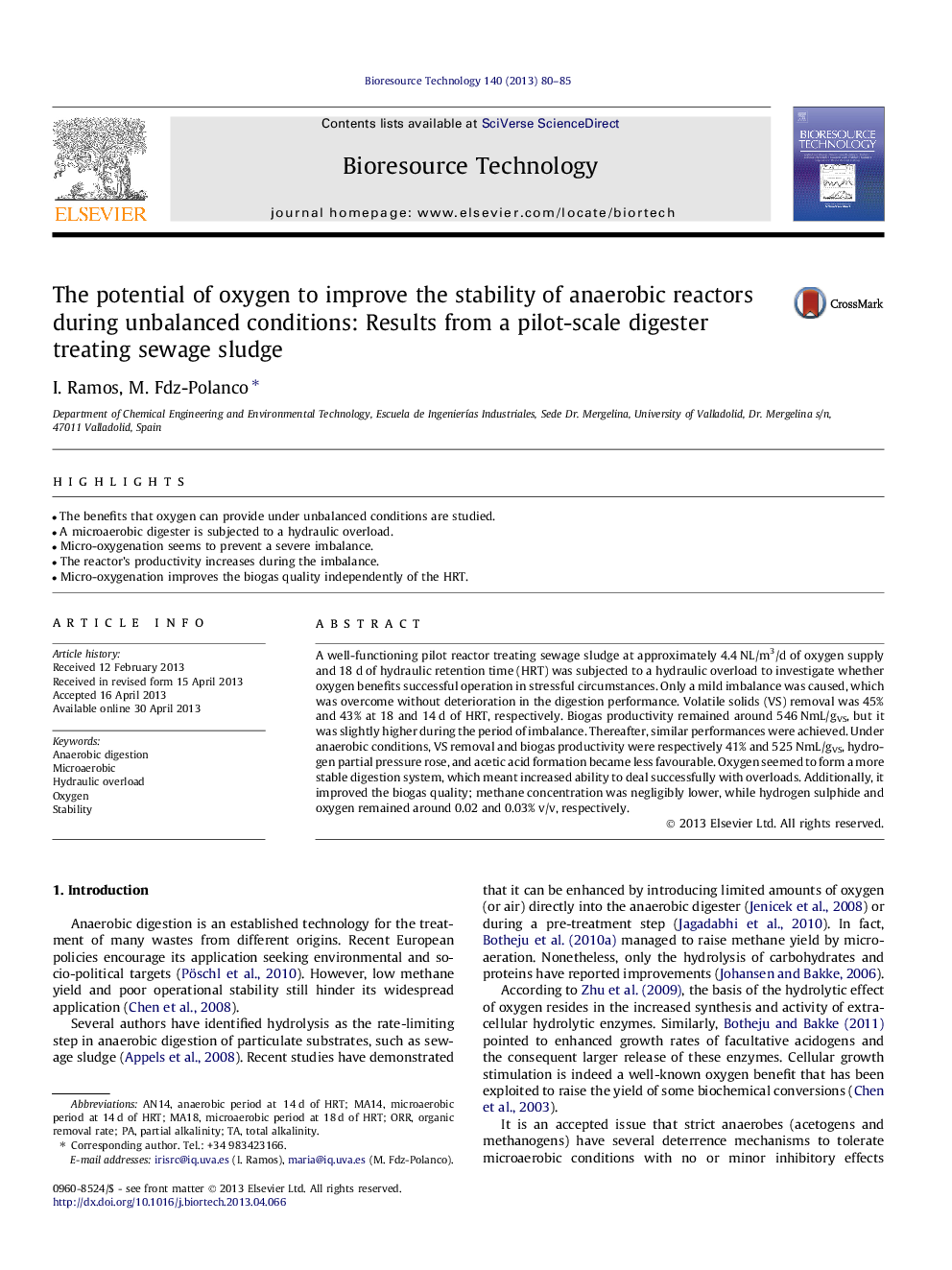| Article ID | Journal | Published Year | Pages | File Type |
|---|---|---|---|---|
| 7081981 | Bioresource Technology | 2013 | 6 Pages |
Abstract
A well-functioning pilot reactor treating sewage sludge at approximately 4.4Â NL/m3/d of oxygen supply and 18Â d of hydraulic retention time (HRT) was subjected to a hydraulic overload to investigate whether oxygen benefits successful operation in stressful circumstances. Only a mild imbalance was caused, which was overcome without deterioration in the digestion performance. Volatile solids (VS) removal was 45% and 43% at 18 and 14Â d of HRT, respectively. Biogas productivity remained around 546Â NmL/gVS, but it was slightly higher during the period of imbalance. Thereafter, similar performances were achieved. Under anaerobic conditions, VS removal and biogas productivity were respectively 41% and 525Â NmL/gVS, hydrogen partial pressure rose, and acetic acid formation became less favourable. Oxygen seemed to form a more stable digestion system, which meant increased ability to deal successfully with overloads. Additionally, it improved the biogas quality; methane concentration was negligibly lower, while hydrogen sulphide and oxygen remained around 0.02 and 0.03%Â v/v, respectively.
Keywords
Related Topics
Physical Sciences and Engineering
Chemical Engineering
Process Chemistry and Technology
Authors
I. Ramos, M. Fdz-Polanco,
